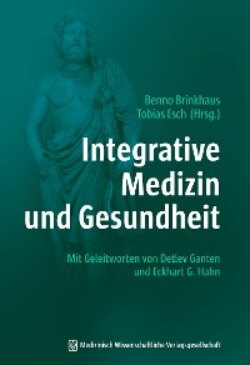Читать книгу Integrative Medizin und Gesundheit - Группа авторов - Страница 41
3.2.3 Era 3: Non-Integrated Integration (1995–2010)
ОглавлениеA turning point for this activity was a New England Journal of Medicine article, noted in the introduction to this chapter. The January 28, 1993 publication of the results of a nationwide survey from a Harvard University team led by David Eisenberg, MD catapulted the grassroots movement into visibility and onto the pathway to recognition and respect. That 34% of adults were using “unconventional” methods outside the mainstream and spending $ 13.7 billion each year changed the behavior of multiple stakeholders. These data gave the field legitimacy and began to shift behavior in hospitals, among insurers, in reporting in the media, among researchers, and in the interests of elected officials.
Tab. 1 Development of Standards by the Licensed Integrative Healthcare Professions (Clugston et al. 2017; this table is from the Clinicians’ and Educators’ Desk Reference [CEDR] which was developed by the Academic Collaborative for Integrative Health [ACIH, formerly known as ‘ACCAHC’ – https://integrativehealth.org])
* For chiropractors, this category uniformly represents licensing statutes; for naturopathic physicians, this category primarily represents licensing statutes, with a few states offering registration statutes; for acupuncture, virtually all states use licensure; for massage and direct-entry midwifery, there is a mixture of licensing, certification, and registration statutes.
** COMTA Accredited schools/programs. Does not include institutions accredited by non-specialized agency.
*** Although the Council on Chiropractic Education was first incorporated in 1971, there were other accrediting agencies and activities within the chiropractic profession dating back to 1935.
The timing was good. The competitive landscape of medical delivery had begun to promote the idea of “patient-centered care” that had taken root 15 years earlier. Offering some integrative services began to be viewed by some as part of that effort. The competition between hospitals created opportunity for integrative services. Yet at the same time, the abiding mistrust and disdain inside organized medicine led to fundamentally non-integrated strategies for integrating these into their business model. In hospitals, stand-alone integrative centers were favored over initiatives that would foster more dialogue and collaboration. Insurers developed what were called “carve-out” models for coverage. Instead of exploring how inclusion of such services might lower costs and provide better care, they merely charged more to offer additional complementary medicine benefits.
In this time, governmental support of research began, yet also with a non-integrated character. Via political and public interest, members of Congress funded what has now become the National Center for Complementary and Integrative Health (NCCIH). The fit with the non-integrated character was that rather than being the result of curiosity among researcher inside the NIH about the remarkable levels of public use of these complementary and alternative practices like acupuncture and meditation, the new center was essentially forced on the NIH by an alliance of the consumers-as-voters and their elected officials. The combination of public interest, emerging use in hospital centers and coverage by insurers, and then the more direct integration into the dominant school that will be described, led annual funding to of this research to rise from $ 2 million in the first appropriation to $ 145 million in 2019.
This growing availability of research funds stimulated interest in academic health centers. Multiple medical clinicians and researchers with an interest in CAM convinced their institutions to allow them to start new complementary and integrative centers. What is now the Academic Consortium for Integrative Medicine and Health, founded with just 12 members in 2002, grew to 75 North American members by 2020. Envisioning the roles of these new academic entities as combining “CAM” with biomedicine, Andrew Weil, MD, a popular author and leader of what is now the University of Arizona Andrew Weil Center for Integrative Medicine began urging that “Integrative Medicine” be the banner under which the movement should evolve. The integrative era was formally seeded in 1995.
